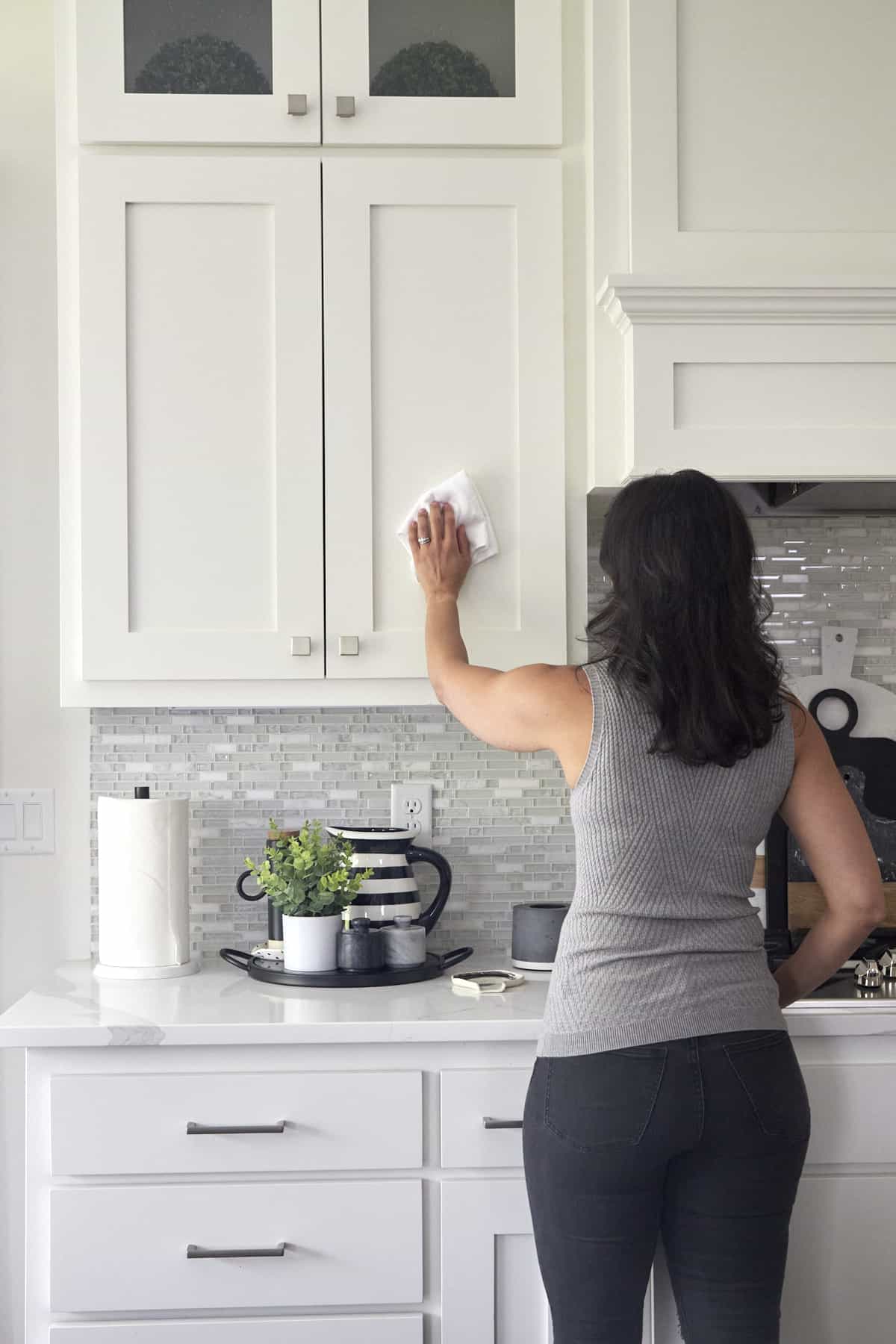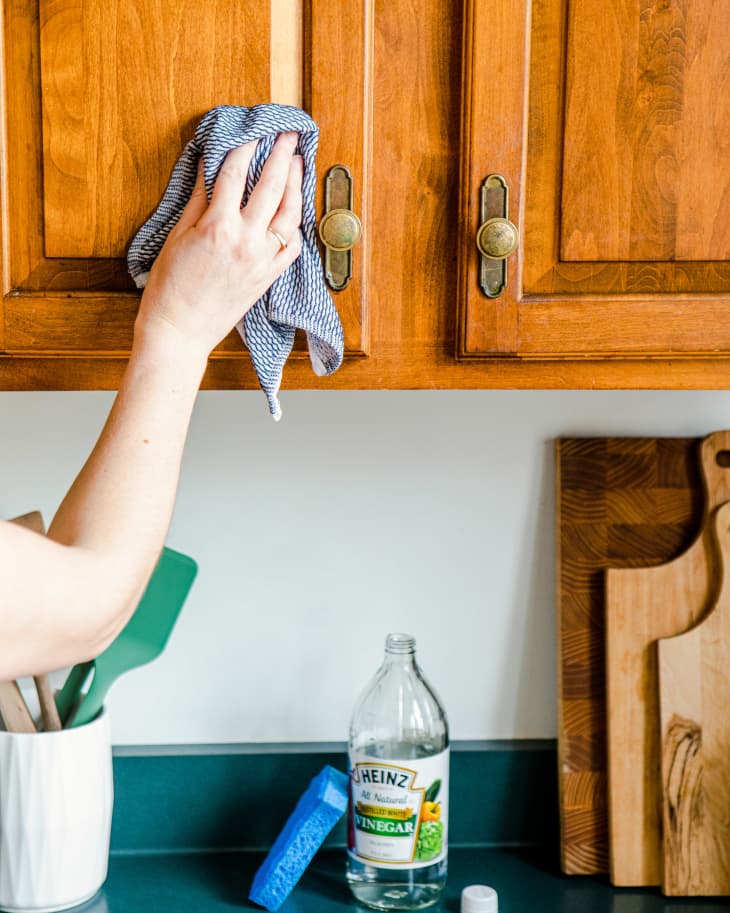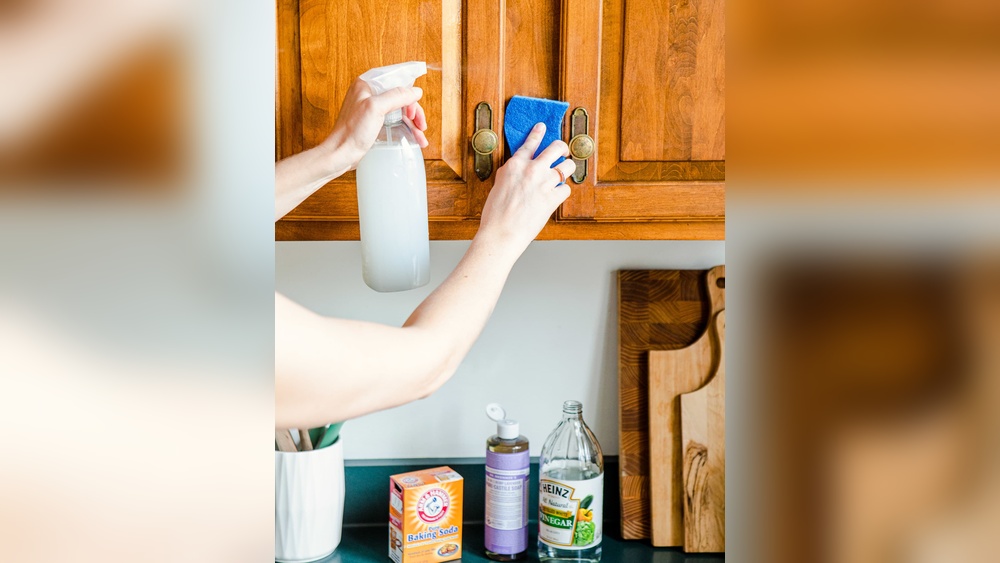Are your kitchen cabinets looking dull, greasy, or just plain dirty? You’re not alone—kitchen cabinets take a beating from everyday cooking splatters, fingerprints, and dust.
But here’s the good news: cleaning them doesn’t have to be a chore or a mystery. With the right approach, you can easily restore your cabinets to their fresh, spotless best. In this guide, you’ll discover simple, effective methods tailored to your cabinet type—whether painted, laminated, or wood—that remove grime without causing damage.
Keep reading and learn how to make your kitchen cabinets shine like new, impress your guests, and enjoy a cleaner, more inviting cooking space every day.

Cleaning Supplies
Soap options for cleaning kitchen cabinets include mild dish soap and specialty wood soap. Use a few drops of dish soap in warm water for painted or laminate cabinets. For wooden cabinets, a diluted solution of Murphy’s Oil Soap works best.
Microfiber cloths are gentle and very effective. They trap dust and dirt without scratching surfaces. Use one cloth to apply soap solution, another to rinse, and a dry one to buff the cabinets. This three-cloth method helps avoid streaks and water damage.
Special tools can make cleaning easier. A soft-bristle brush helps reach corners and grooves. A small sponge can remove sticky spots. Avoid abrasive tools that can damage cabinet surfaces.

Preparation Steps
Start by removing all dust from the cabinet surfaces. Use a soft cloth or a microfiber duster to catch loose dirt. Pay special attention to corners and edges where dust collects. This step prevents dirt from mixing with cleaning liquids later.
Next, protect nearby surfaces like countertops and floors. Lay down old towels or plastic sheets to catch drips or spills. This keeps your kitchen clean and avoids damage to other areas. Cover any hardware that might be sensitive to cleaning solutions. Taking these steps makes the cleaning process easier and safer.
Basic Cleaning Process
Start by mixing a gentle cleaning solution. Use a few drops of Dawn dish soap in warm water for painted or laminated cabinets. For wooden cabinets, a diluted solution of Murphy’s Oil Soap works well. Avoid harsh chemicals that can damage surfaces.
Use a soft microfiber cloth to wipe the cabinets. Move the cloth in small, circular motions to lift dirt and grease. Focus on areas with visible stains but clean the entire surface for even results.
Rinse the cabinets with a clean, damp cloth to remove soap residue. This step helps prevent streaks and sticky buildup. Use plain water and wipe carefully to avoid soaking the wood.
Dry the cabinets with a third dry cloth. Buff gently to restore shine and remove any remaining moisture. This step protects the finish and keeps cabinets looking fresh for longer.
:max_bytes(150000):strip_icc()/steps-to-clean-kitchen-cabinets-1900630-final-5bbcde064cedfd0026eeec24.png)
Tackling Grease
Degreasers work well to remove sticky grease from kitchen cabinets. Use a gentle degreaser suitable for your cabinet type. Spray it on the greasy area and let it sit for a few minutes. Then, wipe with a soft cloth or sponge. Avoid harsh chemicals that can damage the cabinet finish.
Spot treatments help clean tough grease spots. Apply a small amount of degreaser directly to the spot. Gently rub with a cloth or soft brush. Rinse the area with a damp cloth to remove residue. Repeat if needed but do not scrub hard to avoid scratches.
Removing Marks And Stains
Scuff marks can be removed using a soft cloth and a small amount of baking soda paste. Gently rub the mark until it fades. Avoid scrubbing hard to protect the finish.
Stains on cabinets need different treatments depending on their type. For grease stains, mix warm water with a few drops of dish soap. Use a sponge to wipe the area, then rinse with clean water. For tougher stains, a vinegar and water solution works well. Test any cleaner on a small spot first.
Cleaning grooves requires attention to detail. Use a soft toothbrush dipped in soapy water to reach inside the grooves. Brush gently to remove dirt and grime. Wipe with a damp cloth after brushing. Dry with a clean towel to avoid water damage.
Avoiding Damage
Avoid using abrasive cleaners as they can scratch and dull cabinet surfaces. These cleaners harm the finish and reduce the cabinet’s life. Instead, use gentle soaps or specially made wood cleaners.
Use water sparingly. Excess water can cause wood to swell and paint to peel. Always wring out your cloth well before wiping cabinets. Quickly dry any wet spots with a soft towel.
Choose finish-safe cleaning methods that protect the cabinet’s look. Test any cleaner on a small hidden area first. Use soft cloths or sponges to avoid damage. Regular, gentle cleaning keeps cabinets looking fresh without harm.
Tips For Different Cabinet Types
Painted cabinets need gentle care. Use a mix of warm water and a few drops of Dawn dish soap. Avoid harsh scrubbing to keep paint from peeling. Wipe with a soft cloth, then rinse and dry well.
Wood cabinets require special attention. Clean with diluted Murphy’s Oil Soap to protect the wood. Dust first to remove loose dirt. Use a damp cloth for cleaning and dry immediately to stop water damage. This keeps wood shiny and healthy.
Laminated cabinets are easy to clean. Use warm water with dish soap. Avoid abrasive scrubbers that can scratch the surface. Wipe with a microfiber cloth, rinse, and dry to prevent streaks and keep cabinets bright.
Frequently Asked Questions
What Is The Best Thing To Clean Kitchen Cabinets With?
Use a few drops of Dawn dish soap in warm water for painted or laminated cabinets. For wood cabinets, dilute Murphy’s Oil Soap in water. Dust first, wipe with solution using a microfiber cloth, rinse with a damp cloth, then dry to avoid streaks and damage.
Can I Use Dawn Dish Soap To Clean My Cabinets?
Yes, Dawn dish soap works well for cleaning painted or laminated cabinets. Mix a few drops with warm water. Use a microfiber cloth to clean, rinse, and dry to avoid streaks. Avoid using it on natural wood; use Murphy’s Oil Soap instead.
What Should You Not Use To Clean Cabinets?
Avoid using harsh chemicals, abrasive scrubbers, bleach, ammonia, or strong solvents to clean cabinets. These can damage finishes.
How Do You Clean Sticky Kitchen Cabinets?
Dust cabinets first to remove loose dirt. Mix Dawn dish soap with warm water for painted cabinets. Use Murphy’s Oil soap for wood. Wipe with a microfiber cloth, rinse with a damp cloth, and dry thoroughly. Use a soft brush for grooves and Dawn Power Wash for tough grease.
Conclusion
Cleaning kitchen cabinets does not have to be hard or time-consuming. Start by dusting to remove loose dirt and grime. Choose the right cleaner for your cabinet type to protect the finish. Use soft cloths to wash, rinse, and dry carefully.
Regular cleaning keeps cabinets looking fresh and lasts longer. A simple routine prevents buildup and maintains your kitchen’s charm. Try these easy steps and enjoy a cleaner, brighter kitchen every day.

Yes, working as , Food Blogger and Product Reviewer for last 6 years. Here you will get amazing deals for Smart kitchen products. I am your best source for the latest update in cooking trends. I provide insightful articles, reviews, and analysis on cutting-edge kitchen gadget. My mission is to empower readers with the knowledge they need to stay ahead in a rapidly evolving coking world. Join me as we explore the future of food technology and how it shapes our lives today and tomorrow.





